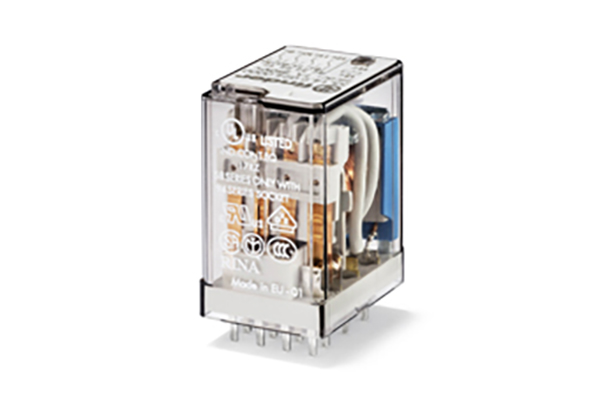- Home
- Product
- About us
- News
- Solution
- Contact us

Contact us
- Fende official mall
聯(lián)系電話:0755-84552800
手機(jī)號(hào)碼:189-2606-1910


聯(lián)系電話:0755-84552800
手機(jī)號(hào)碼:189-2606-1910

Control relay is a kind of automatic electrical appliance, which is suitable for long-distance switch and DC small capacity control circuit, and is used for control, protection and signal conversion in electrical transmission system. The input quantity of relay is usually electric quantity such as current and voltage, as well as non electric quantity such as temperature, pressure and speed. The output is the electrical signal or parameter change of the output circuit when the contact moves.
The characteristic of the relay is that when its input changes to a certain program, the output will gradually change. Relays are widely used. Traditionally, they are divided into the following categories according to different inputs:
1. Voltage relay is a relay that acts according to the change of circuit voltage, such as AC /dc voltage relay for motor voltage loss and undervoltage protection, AC voltage relay for winding motor braking and commutation control, DC voltage relay for DC motor commutation and commutation braking, etc. The intermediate relay used to increase the number or capacity of contacts in the control circuit is also a voltage relay in essence, but its action value does not need to be adjusted.
2. Current relay, which acts according to the change of circuit current, is used for overload and short-circuit protection of motor and other loads, magnetic field control or loss of excitation protection of DC motor, etc.
3. Time relay is a relay with a certain time interval from receiving the signal to the action of the actuator, such as the relay used for delayed switching of starting resistance during motor startup, motor energy consumption braking and production process program control.
4. Thermal relay is a relay for overload and open phase protection of AC motor.
5. Temperature relay is used for overheating protection or temperature control of various equipment.
6. The speed relay is a relay that monitors the speed and steering changes of the power supply motor.
Edit the main technical parameters of this paragraph
(1) Rated parameters refer to the rated value of input quantity, rated voltage and rated current working system of contact, making and breaking capacity of contact, electromechanical service life of relay, etc.
The action value and return value input by action parameters and setting parameters are collectively referred to as action parameters, such as pull in voltage and current, release voltage and current, action temperature and return temperature, etc. Adjustable action parameters are called setting parameters.
(3) Return coefficient refers to the ratio of the return value of the relay to the action value. The return coefficient calculated by current is the ratio of return current to action current, and the return coefficient calculated by voltage is the ratio of return voltage to action voltage.
(4) Reserve factor the ratio of the rated value of relay input or normal working value to the action value is called reserve factor, also known as safety factor. In order to ensure the reliable operation of the relay without misoperation, the reserve coefficient must be greater than 1, generally 1.54.
(5) Sensitivity refers to the power or coil magnetomotive force required to command relay action. In order to facilitate comparison, sometimes the action power or the number of ampere turns required by each pair of normally open contacts is used as the sensitivity index. The sensitivity of electromagnetic relay is low, and the working power is 0.01W. The sensitivity of semiconductor relay is high, and the working power is only 0.000001w
(6) The action time of the action time relay refers to its closing time and release time. The time interval from the relay receiving the control signal to all contacts reaching the working state is called the pull in time, and the time interval from the relay receiving the control signal to all contacts returning to the release state is called the release time. According to the length of action time, relays can be divided into instantaneous action type and delayed action type.
